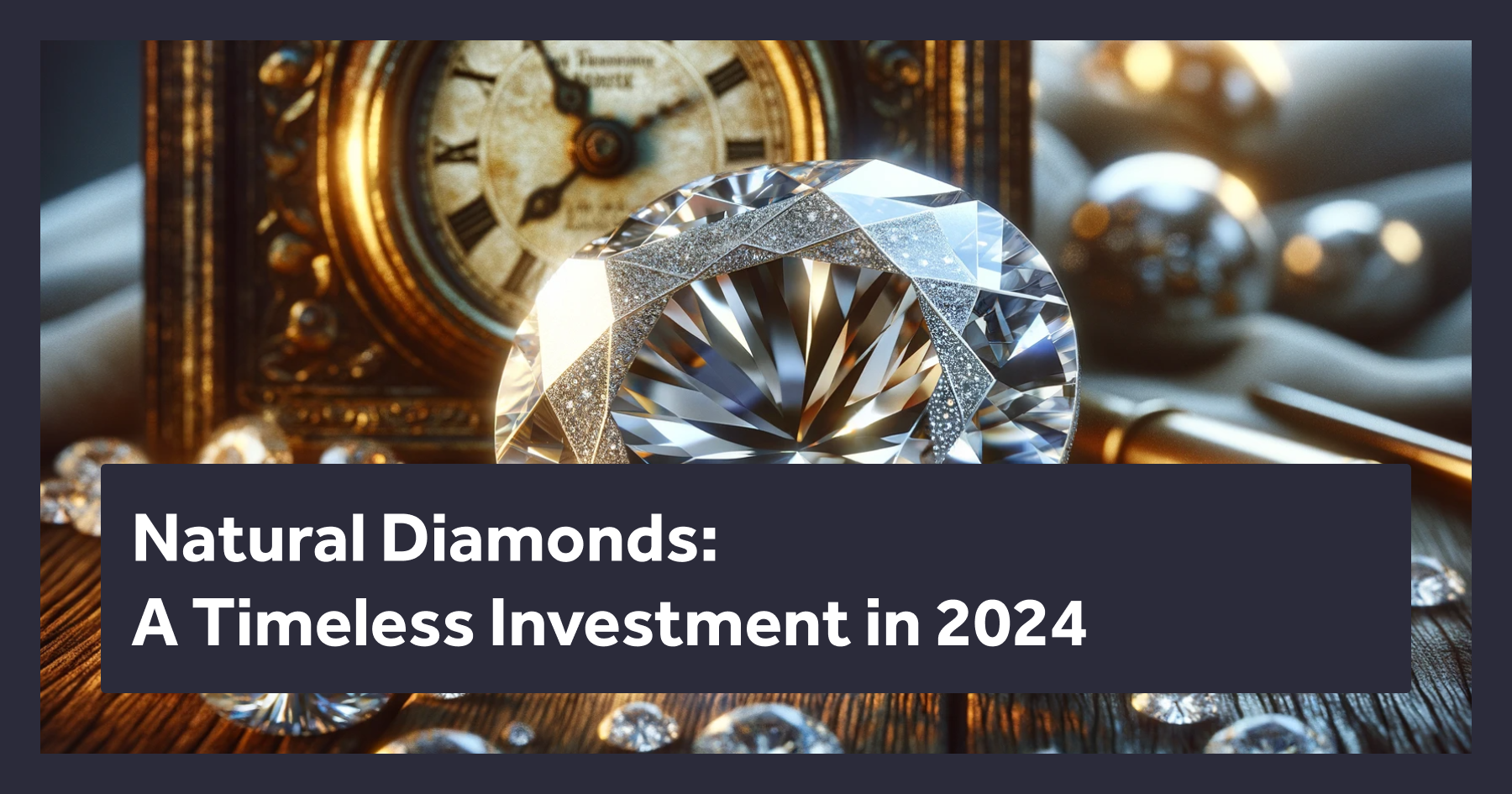This Article Explores
Key Takeaways:
- The law of supply and demand holds true as in any market.
- The diamond industry has been transforming since the late 1900s.
- Public prices and diamond information are necessary to enable investment in diamonds.
When investors try to predict the future, it can be helpful to look at the past to better assess today's market conditions.
Yes, history often repeats itself.
And, if we pay attention, we may recognize the cycles of occurrences that replay repeatedly. An increasing percentage of investors now purchase diamonds as a hedge against inflation. Adding to this demand is Bank of America’s raised forecasts for diamond prices. Buying these precious stones is a relatively new phenomenon in the U.S, but it has grown rapidly. According to Jason Fairclough, Head of EMEA Metals & Mining at BofA Global Search, “the U.S. is making up about 50% of global demand for diamonds right now.”
Throughout history, examples arise of instances where diamonds present an excellent illustration of why investing in these tangible assets may be a ‘safe haven’ in times of economic uncertainty.
The Late 1900s: A Period of Turbulence and Transformation
The late 1970s and early 1980s were a period of significant transformation within the diamond industry. During that period, De Beers still retained considerable control over the industry. Constant transitions between inflation and recession coupled with shifting supply and demand forced the industry to adapt. In times of recession, the sale of diamonds dramatically fell, and miners were often forced to lower prices. These lower prices boosted demand for diamonds not only as a product but as an investment as well.
The initial market for diamond investing was extremely turbulent. The entrance of countries like Israel into the industry shocked supply and demand chains and led to drastic falls in prices. In contrast, heightened levels of speculation and the purchase of diamonds as an investment had the opposite effect.
Speculation was so severe at some points that diamantaires would hoard rough diamonds and refuse to sell them or polish them. This created a significant divergence between the prices of polished gems and their rough counterparts.
Despite the turbulence of the late 70s, the diamond industry thrived with the turn of the decade. A weak U.S. dollar led to increased demand for diamonds from other nations. However, in 1987 "Black Monday" hit economic markets – one of the most significant crashes in history. Despite this, diamond prices remained stable because miners limited supply.
In the years following, rough and polished sales grew to all-time highs. Contributing to this growth was the de-consolidation of the diamond industry. New players like Al Rosa and Rio Tinto entered the industry, forcing De Beers to give up a significant portion of its market share. As a result, supply levels stabilized, demand rose, and the industry and prices continued to grow.
Supply and Demand: The Core of Economics
The major takeaways from the late 1900s are threefold:
1) Diamonds provide a successful hedge against inflation and a tool for speculation.
2) Public prices and diamond information are necessary to enable investment in diamonds.
3) Globalized supply and demand lead to more stability within the market.
However, the market is far more suited for investment in diamonds today, thanks to the changes that took place and the advent of blockchain technology.
What’s crucial to note is that supply and demand are the primary drivers of prices within the diamond industry. During periods of recession, supply for diamonds outpaces demand, and prices temporarily fall. Conversely, during inflationary environments, demand for diamonds increases – this is because commodity prices rise with inflation rates, causing them to outperform assets like stocks and bonds. This relationship between diamonds and all other assets can be explained by its lack of correlation with almost every other asset class. To learn more about correlation please visit “Why Diamonds? Part 1: An Uncorrelated Asset for Portfolio Diversification.”
As such, when most other assets underperform during periods of inflation, diamonds outperform. Further, the raising of interest rates used to curb inflation also gives hard assets an edge over their paper counterparts.
“Diamond prices have historically outpaced inflation as steeper costs mean higher marginal cost equal higher price expectations," according to Jason Fairclough, Head of EMEA Metals & Mining Research at BofA Research.
The Investment Thesis for Diamonds
Fast forward to the present, and the diamond market is once again thriving – not just for the retail purchase of diamonds but also for investment. Pent-up demand from COVID-19 and reduced supply stemming from Russian sanctions has led to increased prices for diamonds.

The demand for diamonds as an investment is higher than ever, thanks to Diamond Standard and the current high levels of inflation. Investors seeking protection from inflation and rising interest rates can now turn to diamonds as a haven for their capital. And, because Diamond Standard has added liquidity, transparency, and standardization to the diamond market, the stones are an even better tool than they have been in the past.
Looming fears of recession, institutional demand, and the democratic market created by Diamond Standard will all contribute to the continued growth and success of diamonds as an asset for investment.
More Industry Insights




